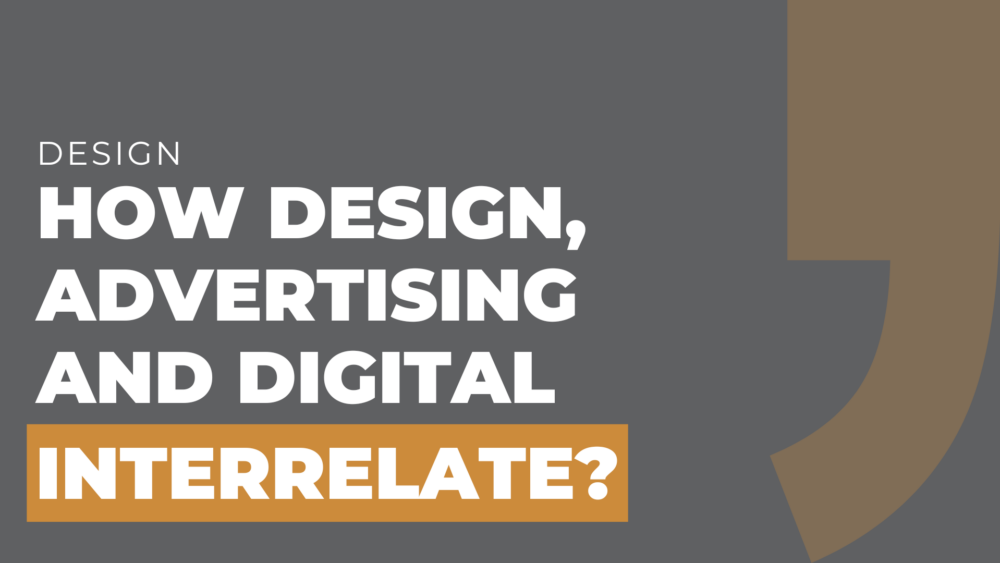Have you wondered how design, advertising, and digital interrelate when it comes to marketing?
Design, advertising, and digital components form the crux of a robust marketing strategy.
The design aspect focuses on creating visually appealing and engaging content that captures the target audience’s attention.
Advertising, on the other hand, is about strategically communicating the right message to the right audience.
The digital component integrates both design and advertising in an online context.
All these pieces fit together to create a whole picture of effective marketing.
Let’s explore this in more detail.
What is the relationship between graphic design and digital marketing?
Graphic design and digital marketing are intertwined in several ways.
Graphic design plays a vital role in creating compelling visuals that can elevate the effectiveness of digital marketing strategies.
It helps in crafting a brand’s image, communicating the brand message, attracting the target audience’s attention, and influencing their perceptions.
From website design to social media posts, email newsletters to digital advertisements, every bit of visual content requires graphic design.
Therefore, it can be said that graphic design serves as the cornerstone of digital marketing, enhancing its aesthetic appeal and improving user engagement.
What is the relationship between advertising and graphic design?
Advertising and graphic design have a mutually beneficial relationship.
Graphic design is crucial in advertising as it uses visual elements to create captivating ads that effectively communicate messages.
Designers employ typography, color, and layout to create visually appealing designs that capture attention and convey the intended message.
They work closely with copywriters and marketers to ensure that the design aligns with the overall advertising strategy.
Similarly, advertising provides graphic designers with opportunities to showcase their creativity and talent.
Ads require visually striking visuals that stand out in a crowded media landscape.
This allows designers to experiment with different techniques and push their boundaries while meeting the campaign’s objectives.
Together, advertising and graphic design create compelling campaigns that capture consumers’ attention and drive desired outcomes.
Putting the Pieces Together
Digital marketing thrives on the synergy of various professionals, including advertisers, designers, and many others.
That’s why it can really benefit to have some skills from each of these disciplines.
Advertisers strategize the marketing approach, aiming to capture audiences with compelling messages and calls to action.
They are adept at understanding consumer needs, market trends, and the competitive landscape, forming the basis for impactful marketing campaigns.
Designers, on the other hand, bring these strategies to life visually.
They harness the power of aesthetics, creating captivating graphics, website interfaces, and social media content that resonate with the target audience.
Their creative output not only enhances the visual appeal but also strengthens the brand identity and deepens audience engagement.
Beyond advertisers and designers, digital marketing also involves the efforts of other professionals.
- SEO specialists optimize content to rank higher in search results, increasing visibility and traffic.
- Content creators and copywriters develop engaging material that provides value to audiences, fosters brand loyalty, and drives conversions.
- Social media managers maintain an active and engaging presence on various platforms, fostering community and customer relationships.
Together, these professionals form a dynamic team that drives the success of digital marketing… if they communicate well.
This interdisciplinary approach allows digital marketing campaigns to excel in the online world, reaching audiences effectively and achieving strategic business goals.
At the End of the Day
Combining design, advertising, and digital elements is foundational for creating a captivating marketing strategy.
When these elements work together, they create a seamless blend of captivating designs and strategic advertising on digital platforms.
This immersive brand experience resonates with the audience, setting successful marketing campaigns apart and leading to increased brand awareness, engagement, and business growth.
It’s a testament to the power of collaboration in the dynamic world of marketing and advertising.


Comments are closed.